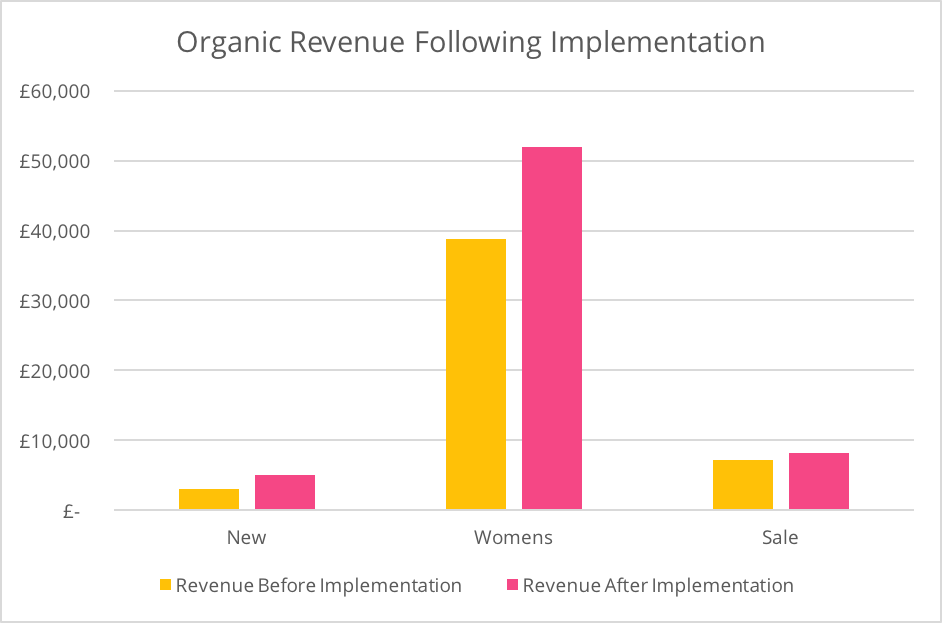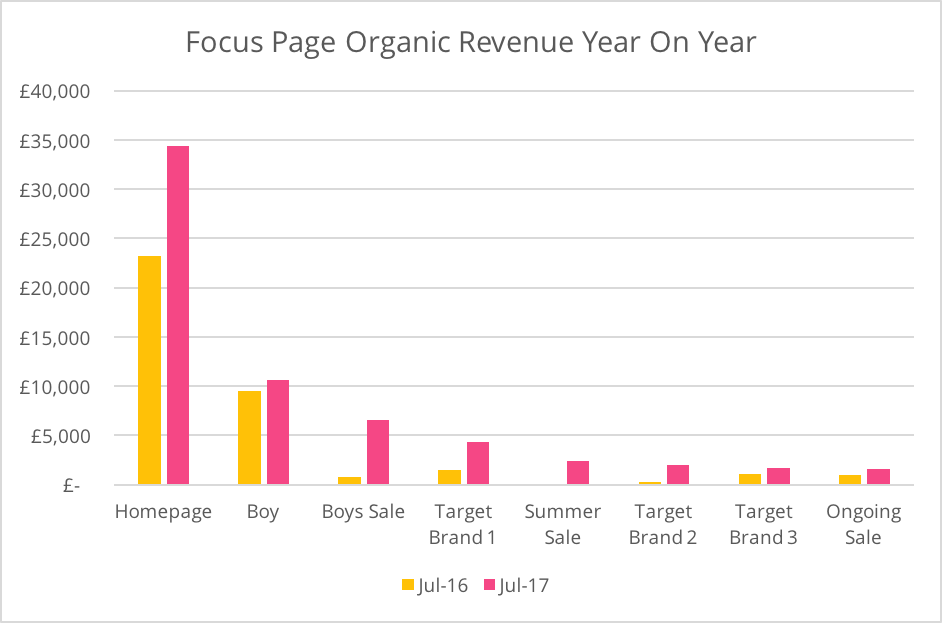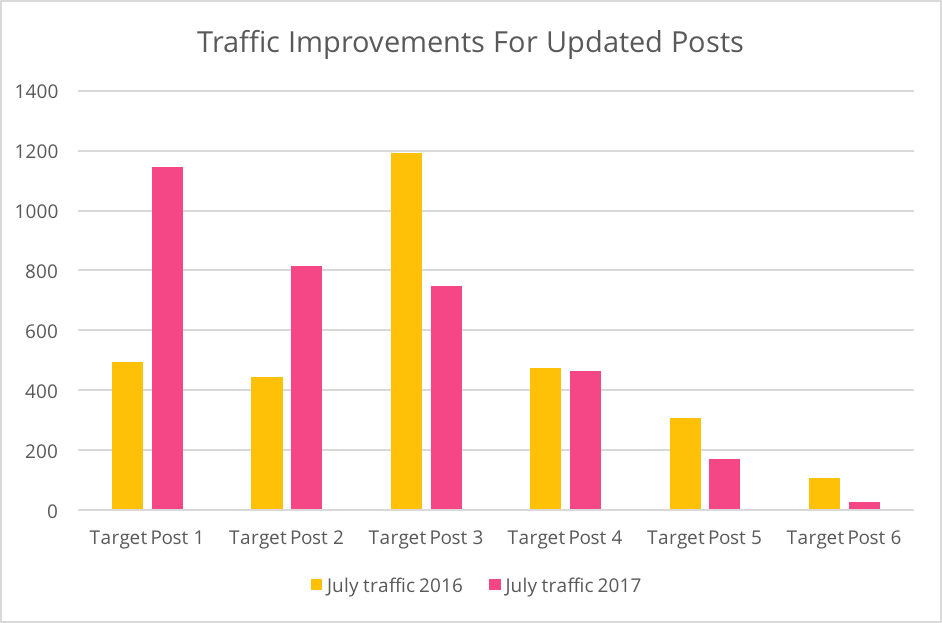At the end of October, I was lucky enough to be able to speak at the first ManyMinds Give It A Go conference alongside some of the sharpest minds in the digital industry. I spoke to the 70-strong audience about the benefits that smart targeting can bring to your landing pages, content campaigns, and overall KPI performance. But what exactly is smart targeting?
It is not content.
One of the ongoing issues we face when talking to clients, partners, and even digital experts is explaining the difference between targeting and content. A lot of people see them as one and the same, with each serving the same purpose and just being part of the overall page. But that isn’t the case, and we need to understand that before we can start looking to improve it.
Targeting is what we as SEOs and marketers use to tell search engines what our content is about. Content is then what answers the user’s query when they arrive at a result.
But it isn’t one or the other.
Without targeting, search engines will find it difficult to understand your content, and without the right content, it won’t answer user queries.
We know that Google is putting more emphasis on user interactions, user experiences, and the relevance of your content to a query (thanks to those pesky algorithm updates…). So, we need to identify what our audience needs, how Google then interprets this need, and then formulate a plan to fill the need.
I know what you’re thinking, how do we do all of that every month and still deliver the same amount of work as before?
Well, firstly, it’s no good delivering work in quantity instead of quality. The more time you spend on it, the better quality it is likely to be. But that’s beside the point, instead of compromising either, we follow this process and so can you:

Whenever a new client comes on board, we spend the first month really getting to know their business, goals, and audience. In that first month we gain as much information from them as possible to begin our targeting approach.
The first step is the keyword research where we use a number of tools and work with the client to determine core portfolios, expansion plans, and potential interest areas. Once we have that, we can go into more detail, or more niche/longer tail searches, to begin to get an understanding of what and where they are ranking for currently. This leads us to the benchmarking stage.
During the benchmarking stage, we gather all performance data for the website and all current ranking data for each of the keywords. This then shows us where there are instantly potential areas for improvement, but that can’t be guaranteed until a gap analysis and competitor review are carried out.
The gap analysis looks at the pages across the client website – what they currently have in terms of service pages/product pages/blog posts/resources etc. The competitor analysis then looks at their core competitors and the pages they have, which might give you something like this:


This shows you the difference between how your client is positioning their services or products, and how their competitors are doing the same.
You’ll see above that in this example the client has a core page buried deep in the site, but the competitor has it in the top navigation. The competitor also has supporting tertiary pages and related resources for more of their pages, so maybe this is an opportunity for you to present to your client.
With that, you can then start to map your keywords to the most relevant landing pages, formulate a content plan to fill any gaps, and begin actioning your research.
Replication doesn’t equal results.
One of the most fundamental errors people make is thinking that they can replicate the work they did for one client for a new client.
They don’t have the same goals. They probably won’t have the same audience. And they certainly won’t have the same business position or pages available on their website.
Every replicated approach just decreases the insight behind the work.
And the insight is what makes your results. You need to get the insight from all of your research and put that into a plan before you can start implementing your targeting approach.
The fundamentals remain the same – you research, you plan, you action. But the action differs depending on what the page is about and who the audience is.
4 simple targeting implementations to do today.
Here are 4 simple implementation strategies you can use today to start improving site performance, covering:
- Service pages
- Product pages
- New page opportunities
- Existing resource content
1. You need to sell your services.
If you have a B2B client, you need to find a way to sell the services to the audience. And you need to do it quickly.
If people can’t instantly see what your page is about, why would they click on it? And more importantly, why would search engines rank it?
Service pages are generally made up of three parts:
- Service name
- Service description
- Related resources
Your targeting needs to reflect that, and the most thorough way you can do that is by carrying out a deep-dive into the service pages.
What content do they have on them? What is the current targeting like? Does the targeting match the content? Does the content match the purpose of the page?
These are questions you will need to answer before you can start looking to tweak them, but when you are able to make changes you can see huge results.
For example, we carried this out for one of our B2B clients and saw a 230% month on month uplift in overall goal completions for two of their core services. If that wasn’t enough, we also delivered a 200% month on month uplift in leads, 5 new keywords ranking in the top 10, and 10 new keywords ranking in the top 5 positions.
While it takes time to get to a position where you can make these changes with the knowledge they will have an impact, it is a fundamental part of SEO. Often overlooked, but hugely impactful.
2. Drive purchases on your products.
For product pages, we know that higher rankings = higher click-through rate = more money because of where people are in their purchase journey.
Without targeting to get these product pages ranking, the most you can hope for is click through optimisation, or a “hit and hope” approach to bringing people to your products.
But when you combine the two, again there are huge impacts for very little investment once all the research has been done. Why?
Because no matter how hard we all try, nobody is immune to the powers of psychological marketing. We all know that we don’t really need that free gift that comes with a magazine, but we just might need another pair of free flip flops that will break on the first day we use them because summer does happen in England…
Putting our tri-angle approach to the test, one of our clients saw a 33% week on week revenue improvement:

And another saw revenue coming from deeper pages year on year:

Which just goes to show that even small tweaks to the metadata can really impact site performance, and your performance against KPIs.
3. Identify new page opportunities.
As well as improving the targeting for existing pages, you can use the research you have to suggest new pages based on targeting, competitor, and content gap analyses.
You can also tackle the age-old debate about seasonal sale pages, by proving their initial value and then making sure they are kept available for the next year to improve on the initial performance. All from just looking at the research you have gathered and what competitors are doing.
When we suggested 2 new pages to one of our clients after following this method, they made an additional £2,800 from organic revenue in the month they went live. These pages are now removed from the navigation but still on the website, gaining authority ready for next year where they will deliver even more.
4. Review, Renew, Redistribute
The 3 R’s method is one that we have put into practice in our targeting team and it again has been hugely beneficial to our work, and for our clients. One of the keys to getting the most out of your content is to constantly be able to tweak it.
The tweaking process is quite simple, and while it may vary slightly depending on the content type it will largely follow 4 steps:
- There is an old piece of content that used to get traffic, but isn’t getting much now
- You review the content piece for:
-
- Targeting accuracy
-
- Time relevancy
-
- Performance differences
- Internal linking
-
- You renew the areas you can
-
- Targeting
-
- Copy
-
- Links
- Layout/structure
-
4. And then redistribute it to your network
When search engines crawl the content afterwards, they will see that it is more relevant and “new” in terms of what it is positioned as and will give it a ranking boost.
This ranking boost then takes advantage of the authority the piece has been gaining since it was published, the increased relevance to user queries, and the improved targeting. Because of that, we saw results like this:

For the two target posts that were updated using this method we saw the total incremental traffic equate to 1,021 sessions. This then meant that those posts contributed 17% of overall traffic for July of this year. That is a monumental figure for some very small but effective changes.
What does it all mean?
By making simple but effective targeting changes, you can drastically improve the performance of any page on your site. You just need to put the time into the research first, so you know what you are doing is right (and don’t start cannibalising other pages!).
The approach you take to targeting really does make the result. If you see targeting as a “basic” optimisation tactic, then you are viewing it all wrong. While it is simple, it is not “basic”. It is a fundamental part of what we do, and how we deliver results for our clients across a variety of industries. The great thing about targeting is that it is never finished, there are always tweaks you can make to pages. The key is knowing how and when they need to be reviewed and refreshed to keep performance on the up.


